Happy Saturday!
I had the pleasure of giving a talk this Thursday night, hosted by Brooklyn Product Design and Pratt.
It was my first time visiting Pratt’s Manhattan campus and so nice meeting people in person.
The talk was titled AI's Impact on Product Design.
Today, I’ll give you a glimpse into part of what I talked about.
New workflows emerged
“Idea to app in seconds.” What a compelling tagline from Lovable.
This “AI app builder” trend has suddenly gained momentum since the beginning of this year.
What used to take around four weeks might now take just two—and in the near future, maybe even two days.
While the “idea to app in seconds” vision is not as glamorous as it sounds yet, I’m beginning to see new workflows taking shape, such as below:
Take the first workflow as an example.
I’ve been trying to drink more water daily. I had a fun, random idea to track and visualize water intake.
I wrote a prompt in Claude:
Please create an interactive web app that helps users track their daily water intake and visualize their hydration progress.
The app should:
- Be built using HTML, CSS, and JavaScript
- Include a form to input water consumption, a visual tracker that fills up as goals are met, and daily statistics
- Have a clean, intuitive interface with responsive design
For the visual design:
- Use a refreshing blue and white color scheme that fits the water/hydration theme
- Maintain accessibility standards with clear contrast and readable fonts
- Include appropriate feedback for user interactions (animations when adding water, celebratory effects when reaching goals)Then a prototype was generated.
The whole process took about five minutes, which would’ve been hard to imagine just a few years ago.
Regarding the second workflow, I wrote about the process in another newsletter earlier this year.
Figma being challenged
Pietro, an inspiring designer, posted this on X two months ago.
It gained a lot of traction that he even published a demo video to explain why.
He mentioned there's a big gap between designers working in Figma and developers implementing those designs. It’s true and I feel it too.
Figma is essentially a vector-based design tool, which is still disconnected from actual frontend development.
Although Figma has been making progress with features like Dev Mode and AI integration, these updates only scratch the surface.
So what would the design tool in the era of AI look like?
I drew the diagram below. How to better integrate design, code, and AI together?
Some new tools, like Subframe, are already thinking about this. For example, it uses pre-built UI components backed by production-ready code (not unusable code).
It also integrates AI features to generate design options. You can then mix and match elements from different options and incorporate them into your final design.
Blurred lines between roles
In design, a unicorn refers to a designer who can code.
The advancements of AI tools helps foster more unicorns like below:
Granted, every role has its own expertise, but the lines between them have become increasingly blurry because of AI.
Tools like Lovable, Bolt, V0, and Replit enable people with limited technical knowledge to build functional prototypes or even real apps.
Tools like ChatPRD enable people to craft better product docs with ease.
Tools like Galileo enable people to generate high-fidelity designs.
New ethical concerns
Bias
About 10 years ago, before ChatGPT was even a thing, Amazon developed an AI recruiting tool to identify top candidates.
It gave job candidates scores, ranging from one to five stars.
However, scientists discovered the tool favored towards male applicants due to the bias in its training data.
This got me thinking:
How can we know if AI’s recommendations or insights are reliable?
How can we know the training data is unbiased?
That’s why, when I use AI to gather insights, I don’t just follow them blindly.
I make sure to do my due diligence and often double check if the sources are reliable.
Another example are tools like Synthetic Users. Some people were excited about it, but I’ve always had mixed feelings.
They claim to run user research with AI participants.
But does user research without real users even make sense?
I’ve been very lucky in my career to work closely with some amazing user researchers. I learned from them how easy it is for bias to slip into the process.
The way you ask a question, the sequence of survey choices, your recruiting process, and the user testing method—all of these little things can introduce cognitive bias that may lead to skewed insights.
This happens even when interviewing real users, let alone when extracting insights from AI participants.
In my opinion, biased user insights are sometimes more dangerous than having no insights at all.
Intellectual Property
Those Ghibli-style AI images generated by ChatGPT a few weeks ago once again brought intellectual property concerns into the spotlight.
It reminded me of Figma again. Last summer, when people were excited about a new AI feature “Make Design”, this post on X made Figma disable the feature, correct the issue, and relaunch it with another name “First Draft”.
It can be a powerful feature though. If Figma announces new upgrades at this year’s Config, like better results and integration with more design systems, I can see many similar AI design tools becoming irrelevant.
New patterns and principles
I talked about this in a newsletter a long time ago. It’s a broad topic, especially since AI products and features have introduced design patterns and interfaces we hadn’t seen before.
For example:
Thumbs up or down to give feedback to AI models
Prompt examples or templates to help users write better prompts
Showing step-by-step thought processes as the tool runs
Personalized user interfaces based on users’ past behaviors
Disclaimers like “AI can make mistakes”
Along the same lines, new design principles have also emerged, such as:
Ensure AI generates consistent, high-quality output, and says “I don’t know” when it doesn’t.
Make sure AI delivers real value and meaningful improvements to users’ lives.
Help users understand how the system works (when needed) so they can make better decisions.
I also shared some reflections of mine to emphasize the importance of learning by doing and humanity. I’ll save that for another time.
Thanks for reading.
See you next week,
Xinran
-
🐰 Easter Surprise
From April 22 to May 8, I’ll be hosting a series of talks with Junaid—AI-Assisted Coding for Designers.
Junaid is an engineer and coding instructor who likes to design. And I’m a designer who likes to build (and wish I knew more about coding).
Hope the talks can empower designers to learn just enough technical knowledge to build better with AI.
For each episode, we’ll cover essential concepts through practical demos.
I’m super excited.
Check it out if you are interested in any of the topics.


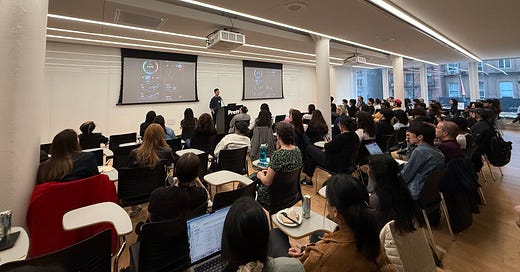



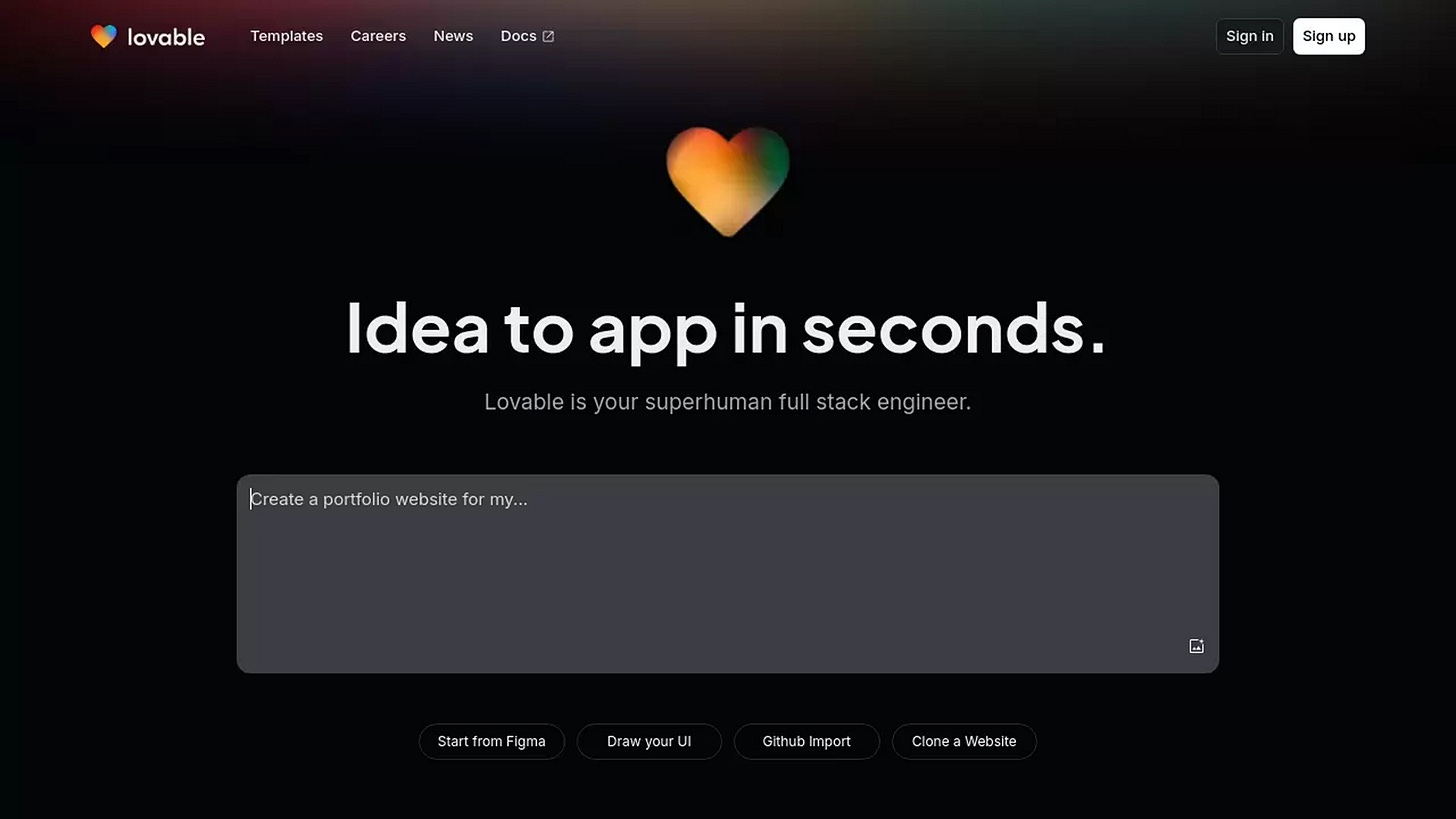

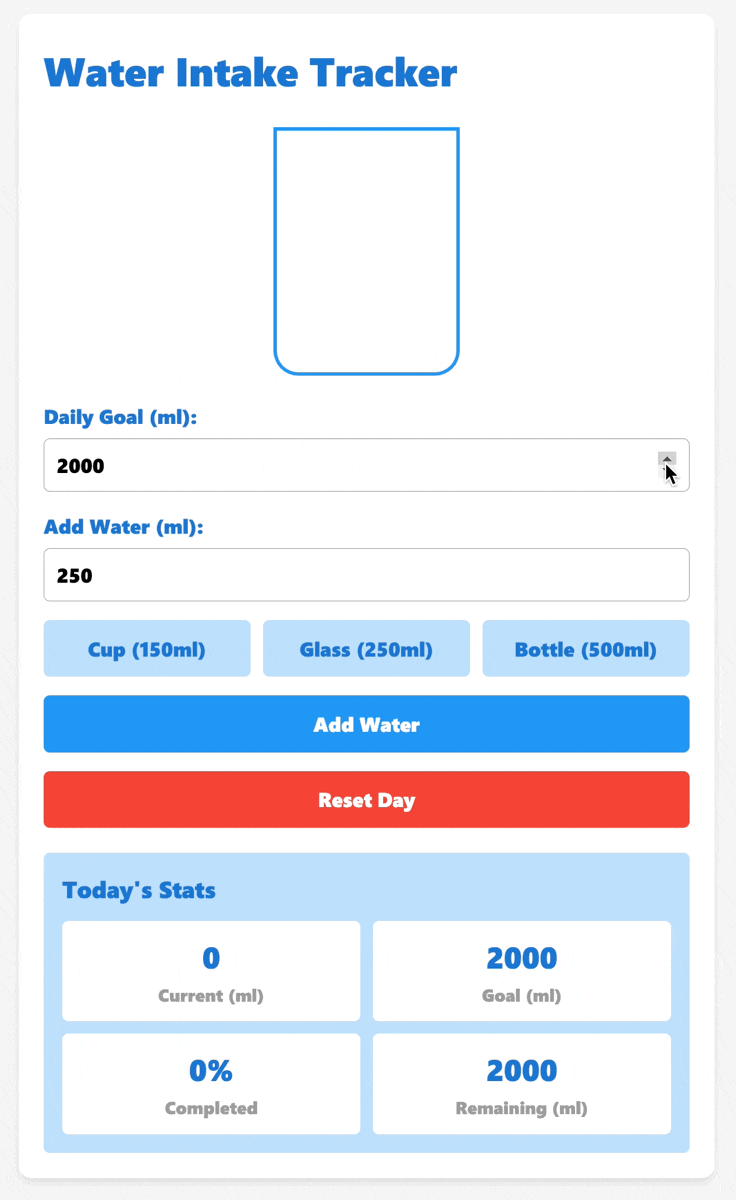
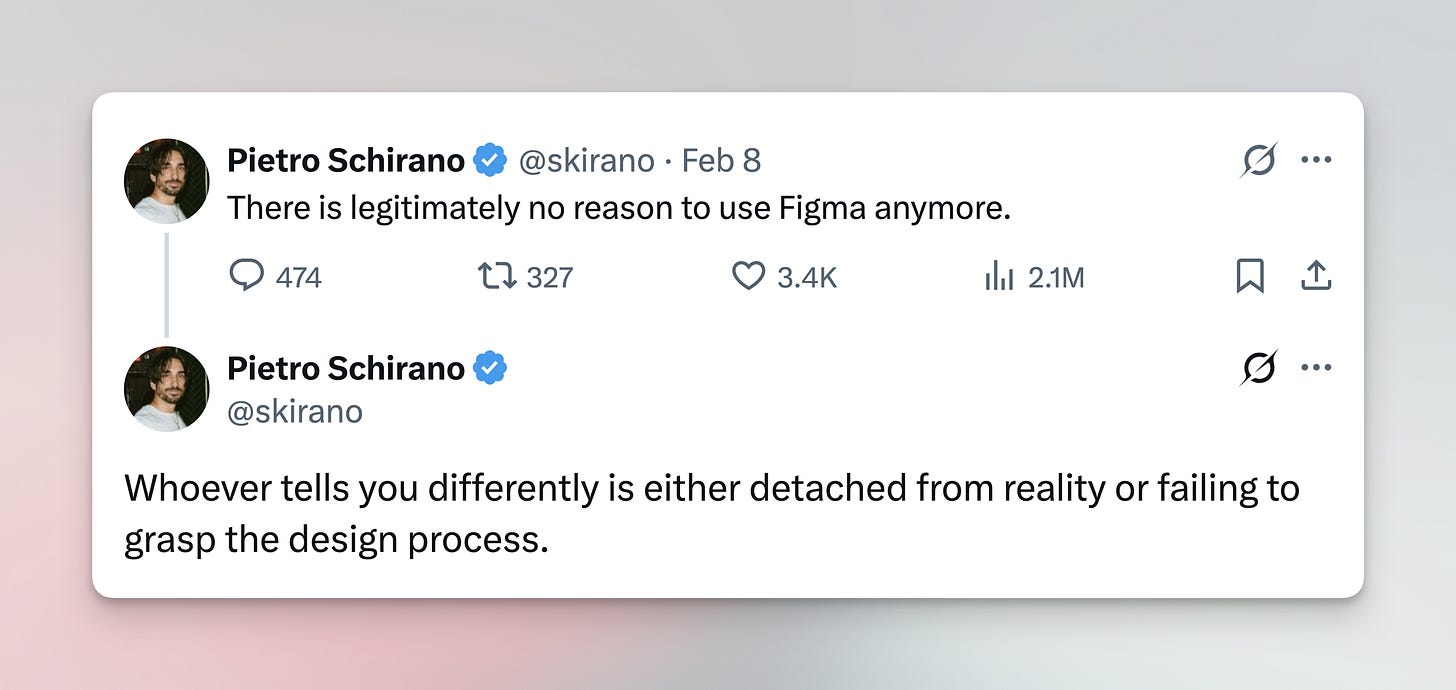
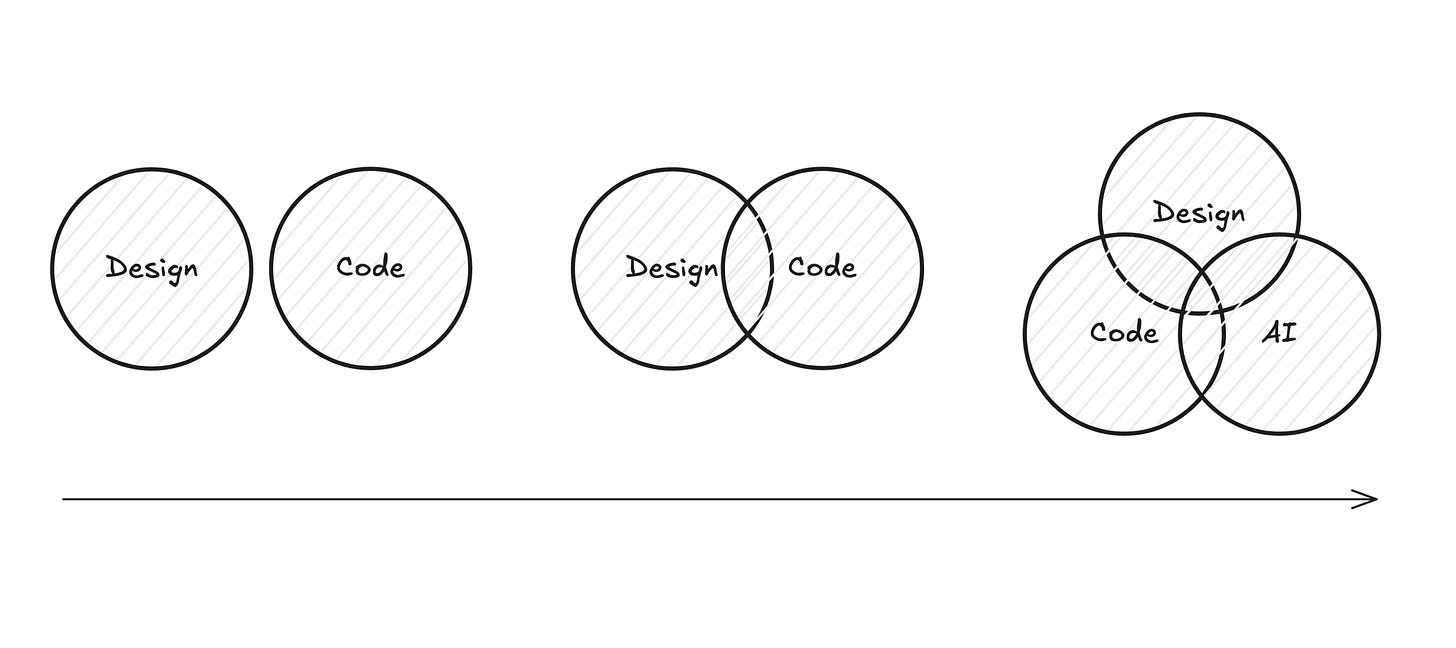
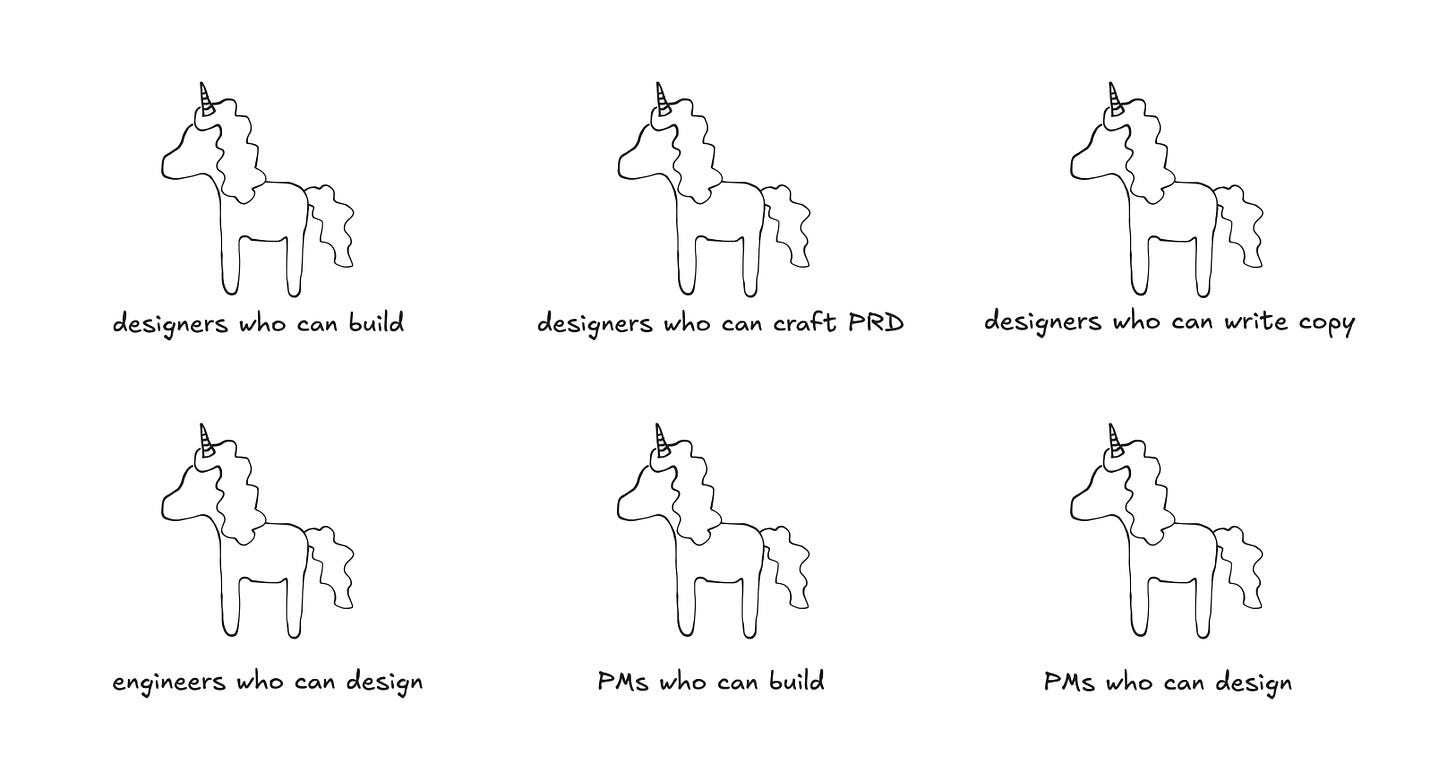

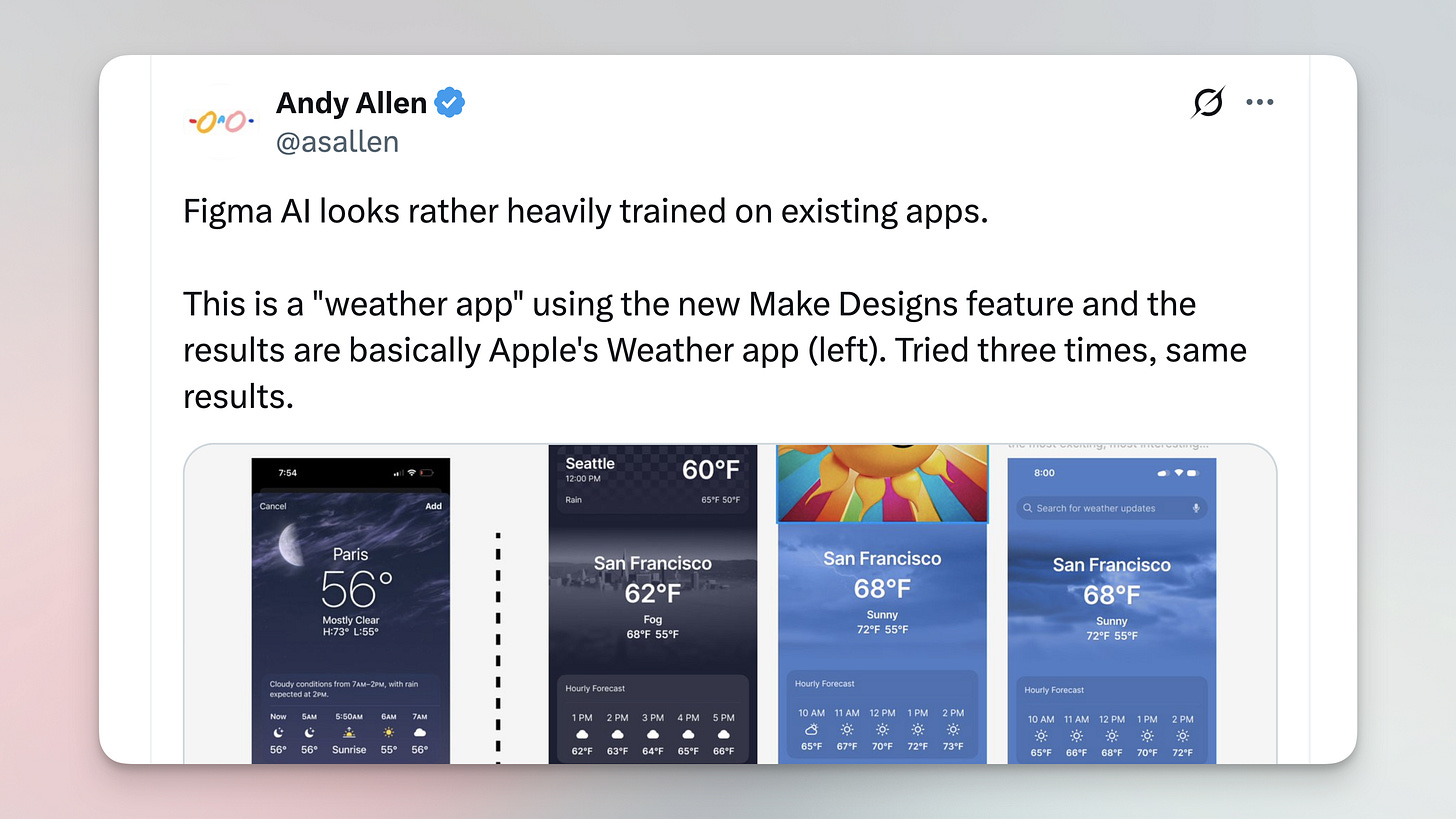
So interesting! I wasn’t familiar with “synthetic users” and my first reaction is that I share your skepticism. (One use case I can see is using them to surface ideas you might not have considered). Will you write a dedicated post about it one day?
Also appreciate you weaving ethics into the conversation!
The fusion of design and development with AI is exactly the conversation we should be having! Those workflow examples perfectly illustrate the fundamental shift happening in product development right now. What used to require specialized skills across multiple domains is increasingly becoming accessible to people with varied backgrounds.
What resonates deeply is the ethical concerns around bias and synthetic user research. Having led digital transformation initiatives across platforms, I've seen firsthand how even small biases in our assumptions can dramatically affect outcomes. The blurring of professional lines isn't just changing how we work - it's redefining what skills matter most. The future belongs to those who can critically evaluate AI outputs rather than those who can simply generate them. For anyone interested in practical AI implementation frameworks that balance efficiency with quality control, I've documented some approaches at https://thoughts.jock.pl/p/ai-decision-journal-data-driven-workflow-optimization